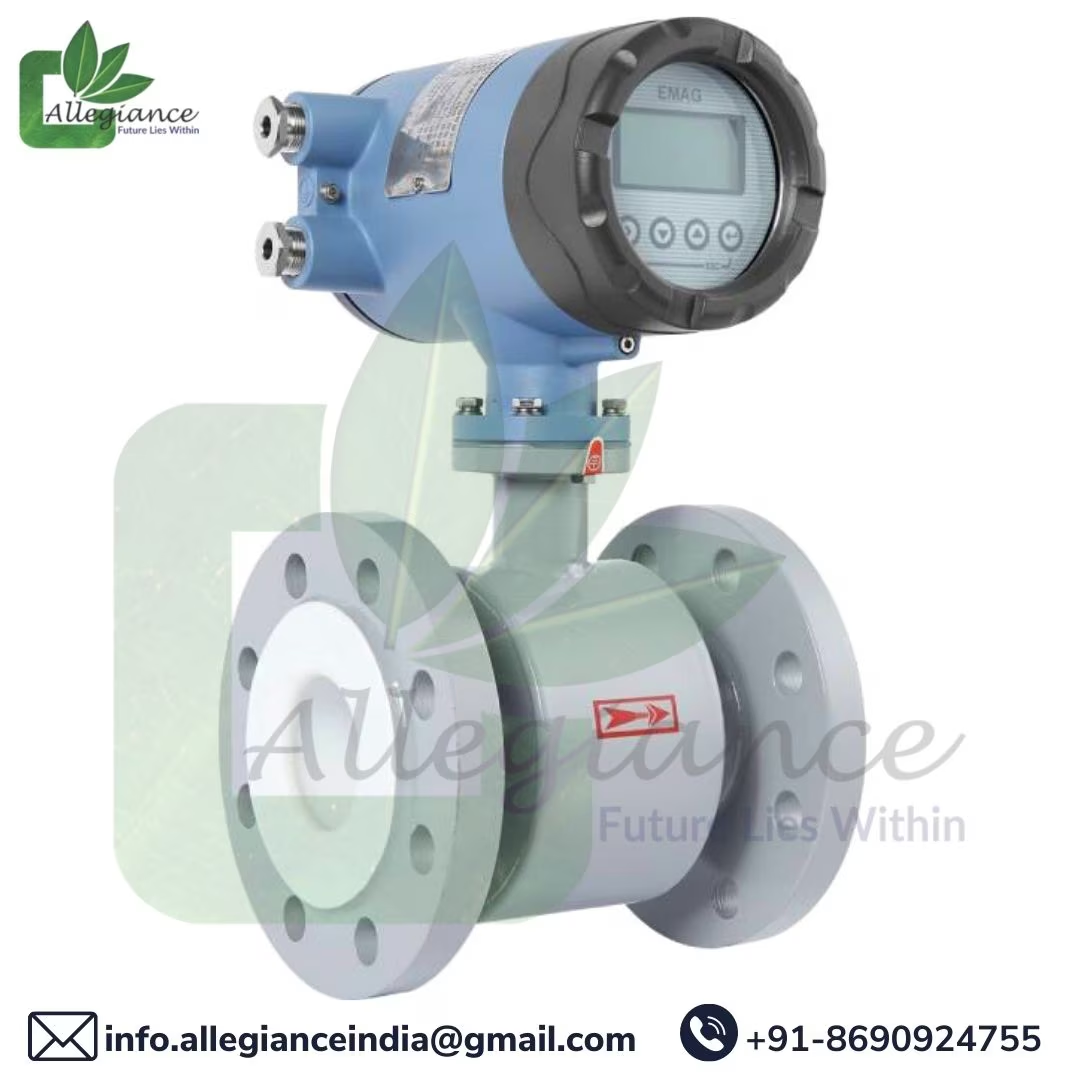AWM MAG-110 - Smart Series EM Flowmeter Allegiance Electromagnetic Flow Meter, simply known as mag flow meter is a volumetric flow meter that is ideally used for water, mild acid or alkali, salt solution, pulp, wastewater (ETP, STP, WTP & WWTP) and other conductive media that experience low pressure drop. However, the medium must not contain enormous ferromagnetic materials and bubbles. It is widely used in the flow measurement of metallurgy, papermaking, environmental protection, petroleum, light textile, chemical industry, pharmaceutical industry, water conservation, municipal construction, food industry and other fields. A mag meter operates on Faraday’s Law of Electromagnetic Induction which states that a voltage is induced when a conductor moves through a magnetic field. The liquid flowing through the pipe acts as the conductor and this induces a voltage which is proportional to the average flow velocity. This voltage is detected by sensing electrodes mounted in the Magflow meter body and sent to a transmitter which calculates the volumetric flow rate based on the pipe dimensions. Allegiance Digital Flow Meter With Telemetry is manufactured as per CGWA Compliance and provides effortlessly smooth performance. Unlike traditional flowmeters, the main meter sensor is designed to have no moving parts that eliminates frequent maintenance.
Send Message



